12 Ways to Upgrade Your Fried Eggs Even better and thanks us later
508
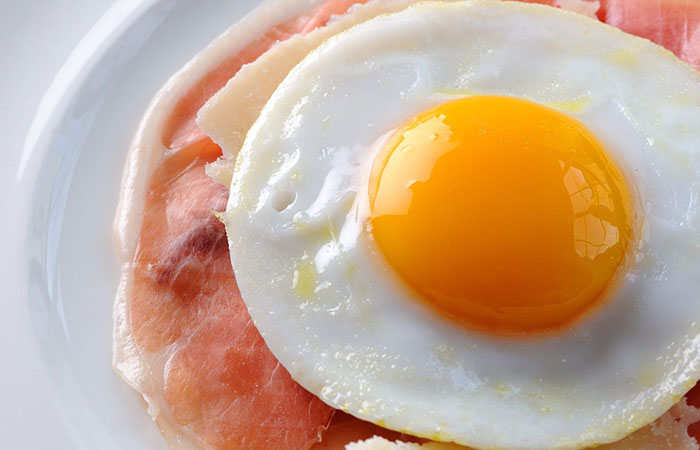
Eggs being used in a variety of dishes, from breakfast omelets to lunch sandwiches and dinner casseroles. Eggs were a low-cost, high-protein food that could be enjoyed by people of all ages.
Eggs are a versatile and inexpensive ingredient that can be cooked in many ways. Fried eggs are a classic and easy to make. To make your fried eggs even better, you can try different cooking methods such as over-easy, over-medium, or over-hard, add toppings such as cheese, avocado, or bacon, or season with herbs and spices. Using our 13 ways to make your fried egg even better, you'll never look at eggs the same way again.
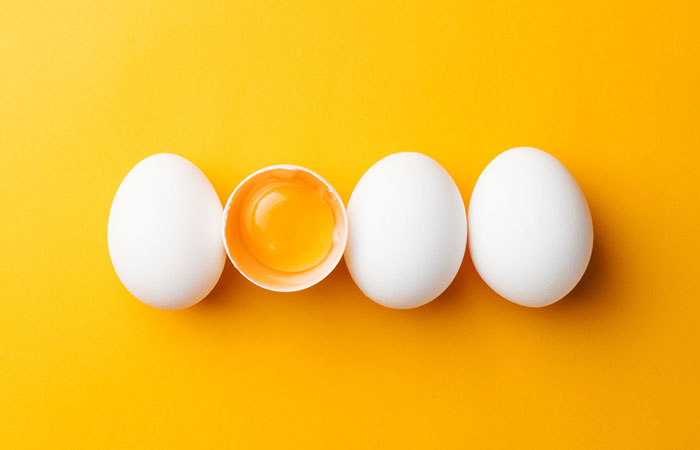
Pick the right eggs
When choosing eggs for frying, look for eggs that are stamped by the USDA, choose the size you prefer, and check for cracks and a fresh smell. Grade AA is the highest quality, but Grade A is also a good choice. Check the expiration date and make sure the eggs are fresh by seeing if they float or sink in water.
Additionally, you may also consider the source of the eggs. If you are looking for eggs that are organic, cage-free, or from free-range chickens, you can look for labels such as "organic", "cage-free" or "free-range" on the carton. These types of eggs are produced under different conditions than conventional eggs and may have a different taste and nutritional value.
Another option is to buy eggs directly from a local farmer or farmer's market. These eggs are often fresher and may have a better taste and nutritional value than eggs that have been transported long distances.
In summary, when choosing the right eggs for frying, look for eggs that are USDA-stamped, free of cracks, have a fresh smell, and are within the expiration date. Consider the source of the eggs, such as organic, cage-free, or free-range, or buying directly from a local farmer.
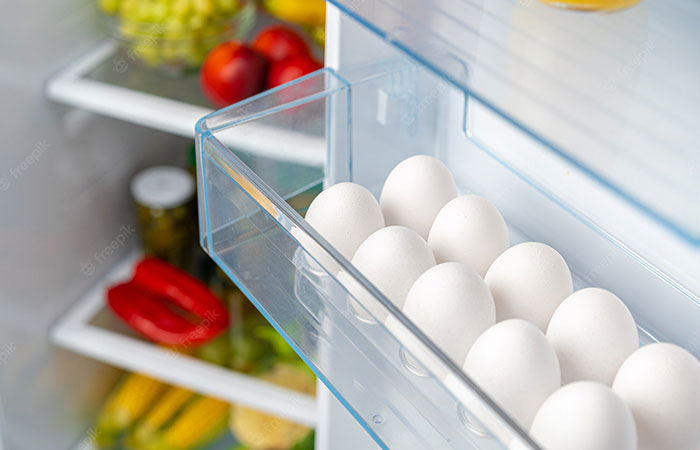
Don't cook a cold egg
Cooking a cold egg can lead to uneven heating and may result in a poorly cooked egg. It is best to take the egg out of the refrigerator and allow it to come to room temperature before cooking. This will ensure that the egg cooks evenly and the yolk and whites are cooked to the desired consistency.
Additionally, cold eggs may crack more easily when placed in hot oil or water, so bringing them to room temperature first can help prevent this. Also, taking eggs out of the refrigerator and letting them sit at room temperature for a bit will also make them easier to peel when hard-boiled.
Another benefit of using room temperature eggs is that they will mix more evenly with other ingredients. This is particularly important when making baked goods, such as cakes or cookies, where a consistent mixture is crucial for the final product. When cold eggs are added to a batter, they can cause the mixture to curdle or become lumpy. Room temperature eggs will blend more easily, resulting in a smoother and more consistent mixture.
It is also worth noting that some recipes call for room temperature eggs specifically, so it's important to check the recipe and follow the instructions accordingly.
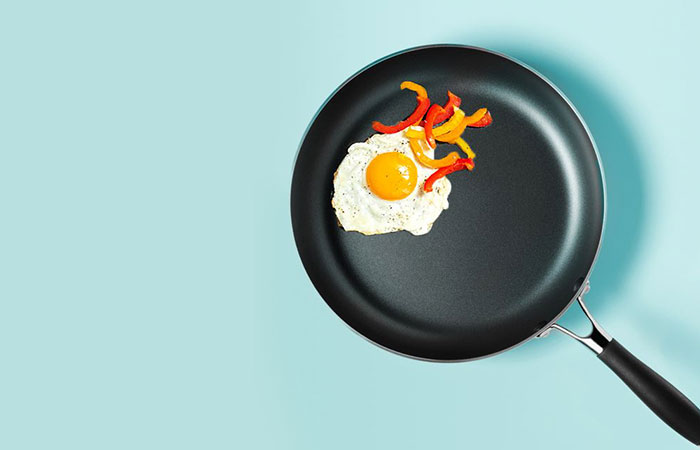
Choose the proper frying pan
To fry eggs, it is best to use a non-stick or cast iron skillet. These pans are able to withstand high heat and distribute it evenly; preventing the eggs from sticking and ensuring they cook evenly. Avoid using pans made of aluminum, as they can react with acidic ingredients like vinegar or lemon juice, which can affect the taste of the eggs. Additionally, it is important to use a pan with sloping sides, as this makes it easier to flip the eggs.
Another good option for frying eggs is a stainless steel pan. Stainless steel is durable, easy to clean, and does not react with acidic ingredients. However, it may not distribute heat as evenly as a non-stick or cast iron skillet, so it may take longer to cook the eggs. If you're using stainless steel, it's a good idea to preheat the pan over medium-low heat and to use a small amount of oil or butter to prevent sticking.
When frying eggs, it's also important to pay attention to the temperature of the oil or butter. If the heat is too high, the eggs may brown too quickly and become overcooked on the outside while still raw on the inside. If the heat is too low, the eggs may take too long to cook and become rubbery. A good rule of thumb is to heat the pan over medium-low heat and wait until the oil or butter is hot and shimmering before adding the eggs.
In summary, the ideal pan for frying eggs is a non-stick or cast iron skillet, but stainless steel pan can also work. It's important to use a pan with sloping sides and pay attention to the heat to ensure that the eggs cook evenly.
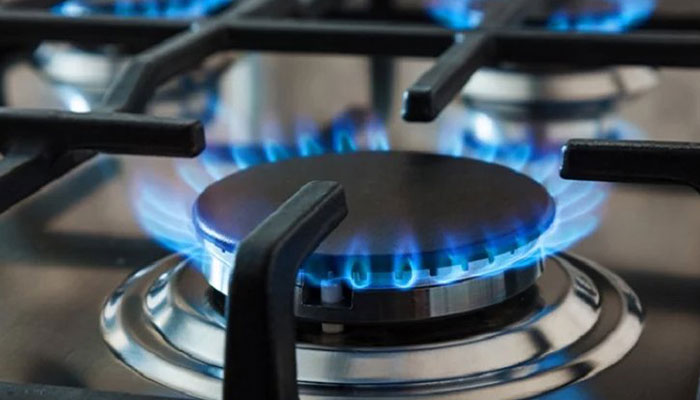
When you frying eggs turn up heat
To fry eggs, heat a skillet over medium-high heat and add a small amount of oil or butter. Once the oil is hot, crack the eggs into the skillet and cook until the whites are set and the yolks reach your desired level of doneness. This will typically take about 2-3 minutes for over-easy eggs, and slightly longer for over-medium or over-hard eggs.
When frying eggs, it's important to use a skillet that is the right size for the number of eggs you are cooking. If the skillet is too small, the eggs will be crowded and may not cook evenly. If the skillet is too large, the eggs may cook too quickly and burn.
It's also important to use the right type of oil or butter. Oils with a high smoke point, such as canola oil, vegetable oil, or avocado oil, work well for frying eggs. Butter has a lower smoke point, so it should be used at a lower heat.
Additionally, when you are frying the eggs, try not to flip them too often, this will keep the yolk in the center of the egg and avoid breaking it.
Finally, once you've cooked the eggs to your desired level of doneness, remove them from the skillet and transfer them to a plate or serving dish.
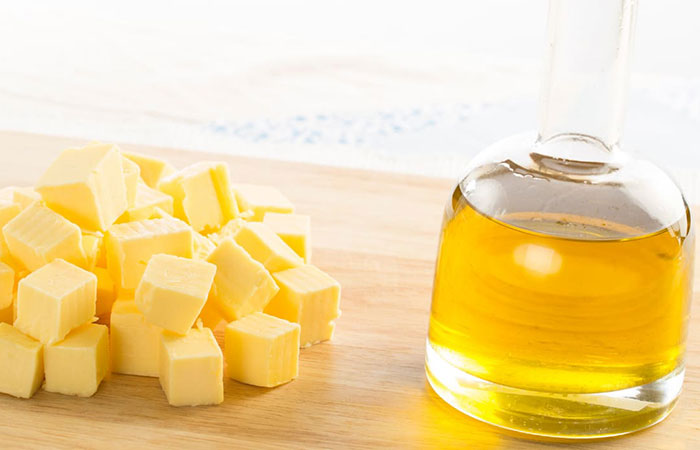
Butter or oil? which should you use
So you are ready now , your eggs are at room temperature, you've a pan, and it's time to cook. Even if a pan is nonstick, you'll need something greasy to make sure nothing gets left behind. Your two options are butter or oil.
Both butter and oil can be used to cook eggs, but the results will be slightly different. Butter will add a rich, buttery flavor to the eggs, but it has a lower smoke point than oil, so it should be used over low to medium heat to avoid burning. Oil, on the other hand, has a higher smoke point and can be used at higher heats, making it better for methods like frying or scrambling. Ultimately, the choice depends on personal preference and the specific dish you are making.
In addition to the smoke point and flavor considerations, butter and oil also have different nutritional profiles. Butter is a saturated fat and is high in calories, while oil can be a healthier option, depending on the type of oil used. For example, olive oil is high in monounsaturated fats and is considered a healthy oil, while vegetable oil is a blend of oils and may not be as healthy.
When cooking eggs with butter, it is important to watch the temperature and stir the eggs frequently to prevent burning. When cooking with oil, it is important to use a high-heat oil and to make sure the pan is hot before adding the eggs.
Ultimately, the choice between butter and oil for cooking eggs comes down to personal preference and the specific dish you are making. If you want a rich, buttery flavor, butter may be the way to go. If you are looking for a healthier option or want to cook the eggs at a higher heat, oil may be a better choice.
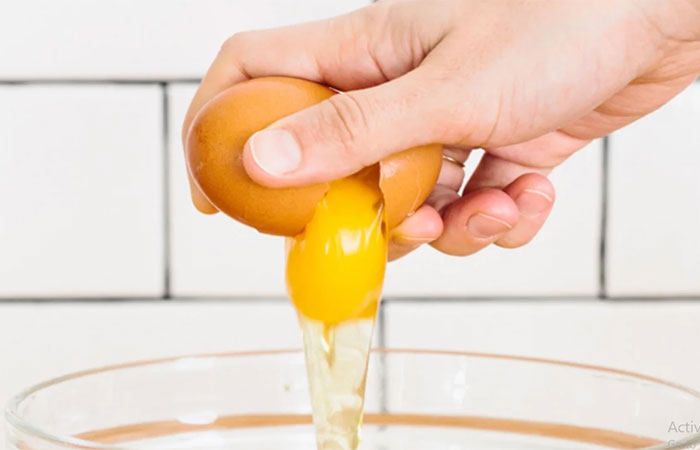
Properly cracking the eggs
To properly crack an egg, hold it in one hand and gently tap the center of the egg on a flat surface, such as a countertop or the rim of a bowl. Apply enough pressure to crack the shell, but not so much that the egg yolk or egg white is damaged. Alternatively, you can crack the egg against the side of a bowl. Once the egg is cracked, use your fingers or a spoon to carefully separate the egg white and yolk.
When cracking eggs, it's important to use clean eggs that are at room temperature, as this will make them easier to crack and less likely to break. Additionally, you may want to crack the eggs into a separate bowl before adding them to your recipe, as this will make it easier to remove any shell fragments that may have broken off during cracking.
It's also a good idea to crack eggs one at a time, so that if there is a problem with one egg (such as a blood spot), you can discard it without affecting the rest of your recipe.
Lastly, if you are going to use the egg whites only, then you can crack the egg and separate the yolk and the whites using an egg separator, which is a small kitchen tool that allows you to easily separate the yolk from the whites.
Frying time: how long should you fry an egg?
The length of time to fry an egg depends on the desired level of doneness. For a sunny-side up egg, where the yolk is still runny and the whites are set, it should take about 2-3 minutes on medium-low heat. For an over-easy egg, where the yolk is still runny and the whites are cooked through, it should take about 2-3 minutes on one side and then 30 seconds to 1 minute on the other side. For an over-medium egg, where the yolk is still slightly runny and the whites are fully cooked, it should take about 3-4 minutes on one side and then 30 seconds to 1 minute on the other side. For an over-hard egg, where the yolk is fully cooked and the whites are fully cooked, it should take about 4-5 minutes on one side and then 30 seconds to 1 minute on the other side.
In addition to the time, the temperature of the pan is also important for frying eggs. A non-stick pan or well-seasoned cast iron skillet works well, and it should be heated over medium-low to medium heat. If the pan is too hot, the whites will cook too quickly and the yolk will remain runny. If the pan is not hot enough, the egg will take too long to cook and the whites may become rubbery. It's recommended to use a small amount of butter or oil to lubricate the pan, this will prevent sticking and give a nice golden color to the egg.
Another important factor is the freshness of the eggs. Fresh eggs have more compact whites, which will hold together better when frying. In general, the fresher the egg, the less likely it is to spread out too much in the pan.
Finally, it's important to be mindful of the size of the egg. Large eggs will require more time to cook, while smaller eggs will require less time.
Overall, frying an egg is an art that requires attention to detail and a bit of practice to get it just right. But once you master it, you'll be able to make delicious and perfectly cooked fried eggs every time.
Using herbs for green eggs
To make green eggs with herbs, you can add chopped fresh herbs to the beaten eggs before cooking them. Some herbs that work well for this include parsley, chives, and basil. You can also add a small amount of spinach or other green leafy vegetables for added color. Cook the eggs as desired, whether it be scrambled, poached, or fried. Enjoy!
Here are some additional tips for making green eggs with herbs:
- Use a variety of herbs for different flavor profiles. For example, use parsley for a fresh taste and chives for a mild onion flavor.
- Chop the herbs finely so they are evenly distributed throughout the eggs.
- Use a food processor or blender to puree the herbs and eggs together for an even brighter green color.
- Experiment with different types of eggs. Scrambled eggs are a popular choice, but you can also try making green omelets or frittatas.
- You can also add a small amount of food color to get a more vibrant green color if you desire.
- Serve with toast or a side of hash browns for a delicious and healthy breakfast.
- If you want you can also add some cheese for a richer flavor.
- To make it fancier you could also add some roasted vegetables like bell peppers, zucchini, and tomatoes.
- You can also try using different types of herbs like cilantro, mint, or dill for a unique flavor.
- Have fun and enjoy experimenting with different combinations of herbs and eggs to find your favorite green egg recipe.
Mix garlic for additional test and benefits
Adding garlic to your fried eggs can provide additional health benefits. Garlic contains compounds such as allicin, which have been shown to have anti-inflammatory, antimicrobial, and antioxidant properties. It may also help to lower blood pressure and cholesterol levels. However, please keep in mind that consuming garlic in large amounts can lead to stomach discomfort, so it's best to add it in moderation.
In addition to the potential health benefits, adding garlic to your fried eggs can also add a delicious and unique flavor to the dish. Garlic pairs well with eggs and can be added in a variety of ways, such as minced and sautéed with the eggs or crushed and mixed into the egg mixture before cooking. It can also be added as a garnish on top of the finished dish. Remember when cooking with garlic, it's best to add it towards the end of the cooking process to prevent it from burning.
Need extra heat? Add hot sauce
Yes, you can add hot sauce to fry eggs for a bit of heat. Simply add the hot sauce to the eggs while they are cooking, or drizzle it over the finished eggs. Be sure to use a sauce that you enjoy and can handle the heat level of, as the heat level can vary greatly between different types of hot sauce.
You can also try using hot sauce as a marinade for the eggs before cooking. Simply whisk together hot sauce and a little bit of olive oil and let the eggs sit in the mixture for a few minutes before frying. Another option is to mix hot sauce into scrambled eggs while they're cooking. Experiment with different amounts to achieve your desired level of heat.
It is also worth noting that you can also add other ingredients to the eggs such as herbs, spices, cheese, vegetables, etc. to create a more complex and flavorful dish.
Keep in mind that the heat level can vary greatly between different types of hot sauce. It's important to start with a small amount and taste as you go to ensure that you don't overdo it.
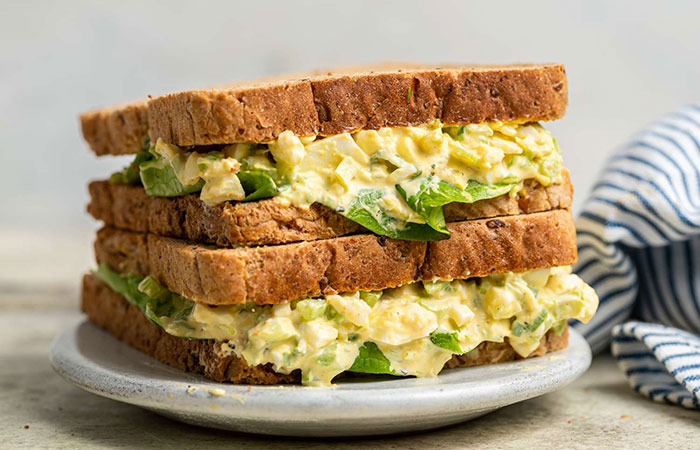
Turn your fried egg into a sandwich
To turn a fried egg into a sandwich, you will need bread (such as toast or a roll), butter or mayonnaise, and any additional ingredients you prefer (such as bacon, cheese, lettuce, tomato, etc.).
- Fry an egg in a pan to your desired level of doneness.
- Toast the bread to your preference.
- Spread butter or mayonnaise on the bread.
- Add the fried egg to the bread.
- Add any additional ingredients you prefer.
- Put the top slice of bread on the sandwich and enjoy!
Use paprika with eggs for color
Paprika, a spice made from ground red pepper, can add a burst of color and flavor to eggs. One way to use paprika with eggs is to sprinkle it on top of scrambled or fried eggs before serving. Paprika can also be mixed into an omelette filling along with other ingredients such as cheese, vegetables, or meat. Additionally, you can use paprika to make a flavorful seasoning for hard-boiled eggs by mixing it with salt and pepper.
Another way to use paprika with eggs is to make a simple yet delicious dish called "shakshuka", which is a popular dish in North African, Middle Eastern and Mediterranean cuisine. To make shakshuka, sauté onions, garlic, and bell peppers in a skillet, then add canned tomatoes, cumin, and paprika. Once the sauce has thickened, make small wells in the sauce and crack eggs into them. Cover the skillet and cook until the egg whites are set but the yolks are still runny. Serve the shakshuka with bread to dip in the sauce and eggs.
You can also make deviled eggs with paprika. To make deviled eggs, hard boil eggs, cut them in half and scoop out the yolks. Mix the yolks with mayonnaise, mustard, and paprika. Season with salt and pepper. Spoon the mixture back into the egg whites. And it's ready to serve.
Paprika can be used in many ways to add color and flavor to eggs, and it's a versatile spice that can be paired with a variety of other ingredients to create delicious and healthy meals.







